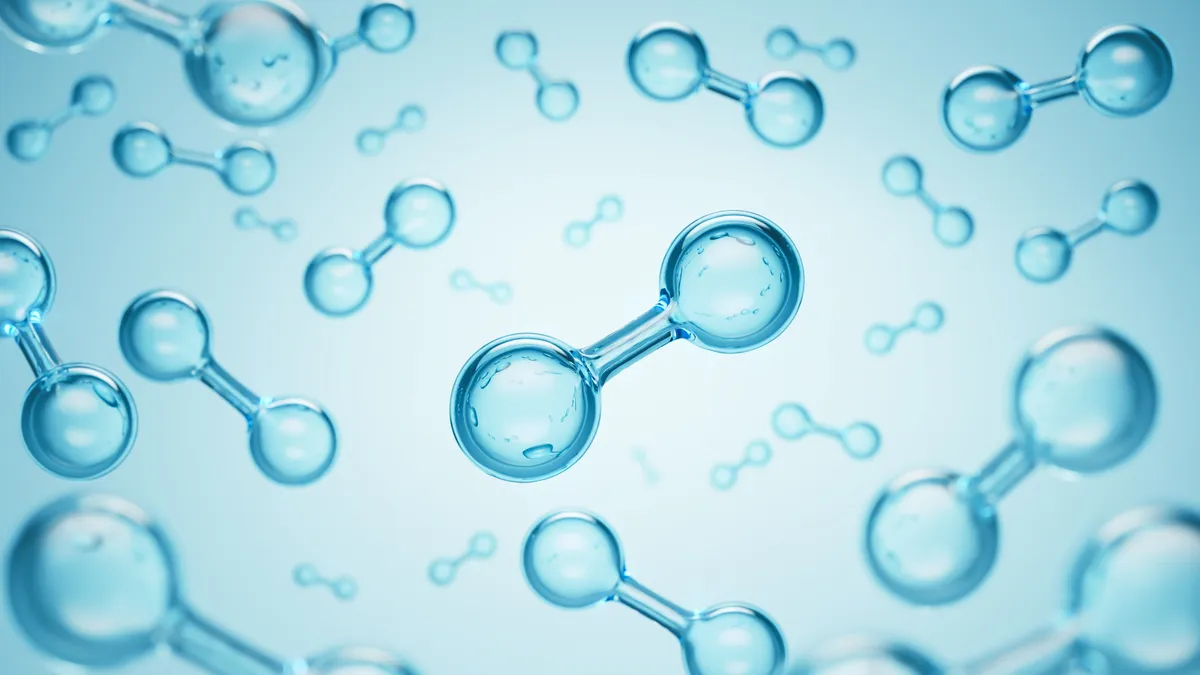Dive Brief:
-
Electrolyzer startup Electric Hydrogen, which also goes by the abbreviation EH2, will build its first electrolyzer factory in Devens, Massachusetts, at a cost of nearly $90 million, according to a Thursday announcement by the company.
-
The plant will have the capacity to manufacture 1.2 GW of electrolyzers annually, or about 12 high-capacity electrolyzers per year.
-
Although estimates of global electrolyzer manufacturing vary — some estimates put the world’s total capacity around 1.4 GW in 2022 — the world will need to rapidly expand the electrolyzer industry to keep up with growing demand for green hydrogen, according to Frank Wolak, president and CEO of the Fuel Cell & Hydrogen Energy Association.
Dive Insight:
EH2’s new factory in Massachusetts could nearly double the world’s electrolyzer manufacturing capacity. And the company is planning another.
The company was working toward electroylzer manufacturing before the Inflation Reduction Act, EH2 chief legal officer Beth Deane said. The goal, she said, was to use economies of scale and bring down the cost of hydrogen by producing larger proton exchange membrane electrolyzers — 100-MW devices, instead of the 1-MW to 5-MW devices that are more common on the market. EH2 also hoped to build electrolyzers that could ramp up and down more quickly in response to intermittent renewable sources of energy.
“Electrolyzers right now are available on a scale that is very difficult to bring them to what is needed in the industry, in terms of what you need if you are really going to address steel, cement and chemical manufacturing,” Deane said. “The size of the electrolyzer needs to be much bigger.”
But with the IRA and the new production tax credit for low-carbon hydrogen, EH2 started getting more orders from customers looking to line up equipment for future green hydrogen facilities, she said. That increase in demand prompted EH2 to move up the timetable for building its first — and likely second — factories. The company is currently selecting a location for a second factory, though the timeline is not yet set. The first, located near EH2’s R&D facility in Massachusetts, should begin producing electrolyzers for demonstration projects by the end of next year, and should reach full production by 2025.
With growing demand from users of hydrogen, such as fertilizer manufacturers and oil refiners, and with expected demand from new potential customers like steel and cement companies, Deane said EH2 expects there will be ample room in the market for new electrolyzer manufacturers. And they’re probably making a pretty safe bet, according to Wolak.
Demand for green hydrogen and for the electrolyzers that make it already exceeds global capacity, Wolak said. “But by and large in the U.S., the IRA has been the pivotal point that has caused people to place orders for electrolyzers, knowing there will be a demand for more fuel,” he said.
Demand for electrolyzers seems to be emerging from three distinct groups of customers, Wolak said. One is renewable energy developers who plan to co-locate hydrogen facilities in areas where renewable resources are abundant. Another, he said, consists of companies looking to build grid-connected hydrogen facilities in regions where demand for hydrogen already exists.
Users of hydrogen, including industrial users and newer users like logistics companies that are looking to manage fleets of hydrogen-powered vehicles, represent a third set of electrolyzer buyers, Wolak said. Some of these companies are exploring the possibility of producing their own hydrogen supply on-site.
And overall, Wolak said, U.S. manufacturers seem to be doing a good job of ramping up to keep pace with all this emerging demand.
“The next big step for everyone is finding pathways for more capacity without limitations, barriers and constraints at a local or permit level,” he said. “The IRA laid out a massive build-out of electrical resources...but we need to get projects off the ground and built and connected to the grid.”














